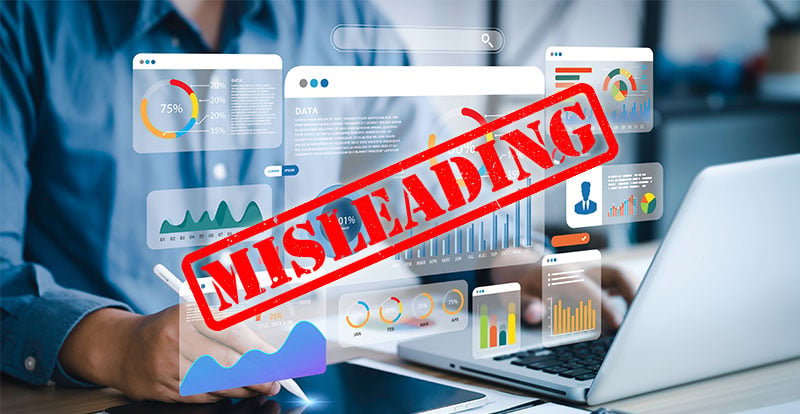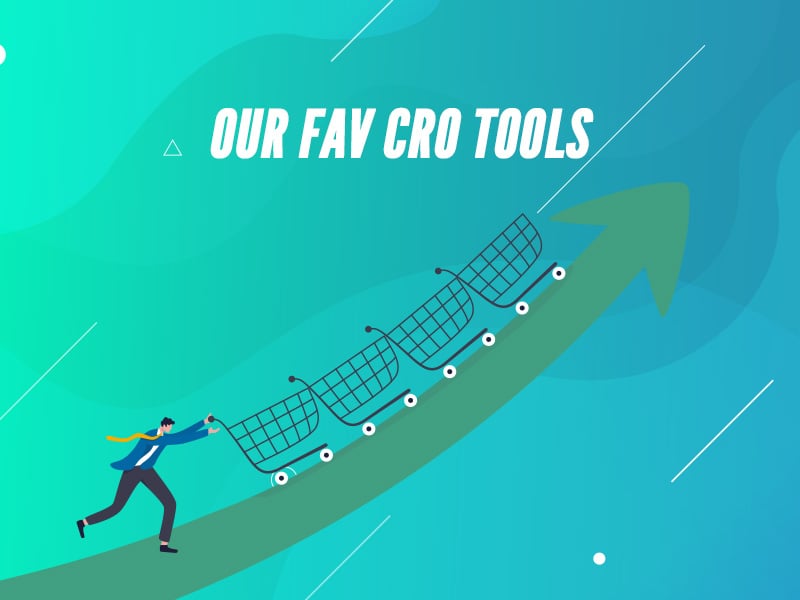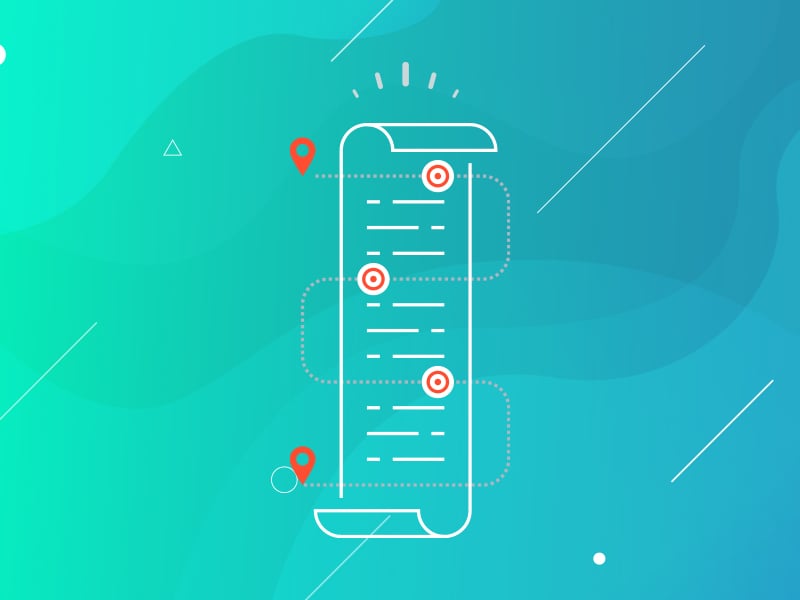When I work with small businesses, one of the first things I emphasize is the importance of data and metrics. Metrics power almost all our marketing and business decisions. In fact, when it comes to something like SEO, all decisions are based on metrics—we never guess. Just as tracking buyer behavior has been a valuable tool in retail for decades, the internet has made it even easier. With various systems available, we can now track a user's decisions on your website with great sophistication. This goes beyond simply knowing what items they buy or when certain products sell out. There are nuances to the customer journey, and several metric measurement options can help you turn that nuanced data into actionable business strategies.
So, how exactly are you going to measure or quantify buyer and visitor behavior? No, you won’t have to sit at your PC with a notepad while visitors explore your website. Just like every other need in the digital age, there’s a tool for that! Actually, there are lots of tools for that. Tools like Google Analytics, Hotjar, Google Search Console, and Ahrefs each offer their unique set of advantages for monitoring your online visitors and buyers.
However, before you dive in and start spending on tools you don’t know how to use, let's go over the basics of website metrics and the best ways to utilize them. This way, you can avoid common mistakes such as installing tracking tools and never using them or focusing on vanity metrics that don’t really matter.
Understanding Website Metrics
Your website has multiple purposes, but your main goal is to make that sale. Whether it’s a product, a service, or a means of convincing an online visitor to go to your storefront, the purchase is the ultimate purpose. Website metrics aren’t all directly related to sales, but each one can affect and influence design or business decisions. If you knew customers were spending more time on certain pages than others, you’d likely spend time evaluating why they made that decision and edit the underutilized page to reflect that.
That’s what most website metrics can be used for - identifying the content and design styles that work and those that don’t. Before we talk about the tools that can get you this data, let’s identify which metrics are the ones that matter most.
Page Views
The number of times any of your pages is viewed by a visitor. It directly shows you which pages are more popular than others.
Average Time on Page
This metric will let you know just how long users are spending on a page. The longer an online visitor spends on your page the more likely they are to become a customer.
Average Session Time
Even if you don’t make a sale, you want users spending time on your site, so monitoring session length indicates the interest those visitors are showing your business.
Bounce Rate
This metric is less fun than the others. It measures how quickly a user who clicked on your website left your site and went elsewhere.
Traffic Sources
This is a vital metric! It’s a key indicator of where your market is as it reveals the sources your online traffic came from - whether they were paid searches, organic searches, or even email traffic.
Device Type
Believe it or not, knowing whether your site was accessed from a Mac desktop or an Android smartphone can help you cater to your market’s tastes and devices with your style and functionality choices.
Conversion Rate
Not every “conversion” is a sale, but each one needs to be tracked. A conversion can be a completed email subscription, an accessed free trial, or a fully completed purchase - but monitoring them can help you map out your customer’s journey and perfect it.
Some of those metrics seem more relevant than others, but they all provide key data you can use to improve your site, pages, and ultimately your entire business. Your website isn’t the only virtual tool or page users will use to find your business though, so you need to pay attention to your Google pages.
Utilizing Google Business Profiles
Other than a social media page, Google Business Profiles are the best form of free advertising available to business owners. Data shows that around 81% of users Google a business before they visit or make a purchase, and when they search for your business the first result they’re going to see is the business profile. A Google Business Profile is the closest thing we have to modern-day business cards. It has your contact information, operating hours, pictures of your business and products, and whatever details you choose to provide. Simple, but exceedingly significant when everyone has a miniature computer in their pocket.
Users will use those tools to contact your business and even get directions to it, but as the old ads say, that’s not all! You’re probably not surprised to read that Google Business Profiles also come with unique metrics and data provided by Google. This isn’t your personal website, so it’s not like you’re getting a conversion or sales rate, but they provide valuable data you can use.
Here are a few examples of the data you’ll receive.
- Profile Views
- Search Queries
- Total Interaction Summary
- Call Information
- Unique Messages
- Food Order Specifics
- Booking or Reservation Data
- Website Clicks
Arguably the most important aspect of that profile is your reviews. I have been preaching this for years - any small business needs to build their reviews. Your reputation is a part of your business, and users who see others singing your praises are much more likely to stop in or place that order. Turn out that over 90% of shoppers are influenced by reviews, so make them a priority.
Reviews aren’t the only way you can improve and update your profile, so here are a few tips.
- Keep Contact Info and Operating Hours Current
- Add High-Quality Photography
- Don’t just rely on customer photos!
- Respond to Reviews - Both Good and Bad
- Verify and Complete Your Profile
Just because a customer Googles your business and finds that profile doesn’t mean you're seeing all potential traffic. You want your business to appear when someone searches for your industry in your area, and that’s where localized SEO comes in.
Local SEO and Its Impact On Your Business
Chances are you’re familiar with SEO, otherwise known as search engine optimization. If you aren’t familiar, then the simple explanation is that it’s a way of focusing your content so that your business appears when someone uses a search engine for your industry or product. The more relevant keywords your content features, the more likely users are to find your website or social media pages when they make that Google search.
So now that we’re on the same page, Local SEO is exactly what you think it is. It’s a form of strategizing that increases your business’s visibility in local search results. For example, it’s just another tool that ensures when someone googles “web design in Philly” they find The 215 Guys.
For small businesses that rely on foot traffic as much as online traffic, local SEO can be a huge boost. Trends change, and keyword trends can also affect business. That’s why I use tools like Google Search Console, Ahrefs, and Nightwatch.io to track keyword rankings and search visibility. You can stay on top of user behavior and tendencies by looking at current trends and rankings and adjusting your content based on those results.
Using Google Analytics for Local Businesses
Whether you’re operating multiple locations or just a single storefront, Google has the perfect way for you to keep tabs on your data. Google Analytics is some of the most valuable data and metrics you could imagine all under one roof and that current roof is called GA4.
The service not only lets you measure and track user data and behavior, but it also catalogs that data so you can measure trends over time. There’s so much depth to the insights it provides that it can help turn a dying business into a thriving company. If you’re looking to effectively optimize those profiles, these are the 7 key metrics you need to monitor.
Key GA4 Reports and Metrics To Know
- Life Cycle Report:
- User Acquisition:
- Shows where new users are coming from.
- Key metrics: New users by channel, traffic source.
- Engagement:
- Details how users are interacting with your site.
- Key metrics: Engaged sessions, average engagement time, engagement rate.
- Monetization:
- Tracks revenue and conversion events if applicable.
- Key metrics: Purchases, revenue, eCommerce purchases.
- Retention:
- Indicates user retention over time.
- Key metrics: Returning users, user retention by cohort.
- User Acquisition:
- User Report:
- Demographics:
- Provides insights into user demographics.
- Key metrics: User age, gender, location.
- Tech:
- Shows the technology users are using to access your site.
- Key metrics: Device categories, operating system, browser.
- Demographics:
- Events Report:
- Tracks specific interactions on your site.
- Key metrics: Event count, event name, event parameters.
- Importance: Offers granular insights into user interactions such as clicks, downloads, and video plays.
- Conversions Report:
- Focuses on specific conversion actions.
- Key metrics: Conversion events, event count, conversion rate.
- Importance: Measures the effectiveness of your site in driving desired actions like form submissions or calls.
- Explorations:
- Allows for custom analysis and deep dives into specific data.
- Key metrics: Custom user journeys, segment overlap, path exploration.
- Importance: Provides advanced insights tailored to your specific business questions.
- User Explorer:
- Provides detailed insights into individual user behavior.
- Key metrics: User ID, user lifetime value, user journey.
- Importance: Helps understand the behavior of high-value customers and refine marketing strategies.
- Search Console Integration:
- Integrates search performance data.
- Key metrics: Impressions, clicks, average position for search queries.
- Importance: Helps refine SEO strategy by identifying popular search terms and optimizing content accordingly.


